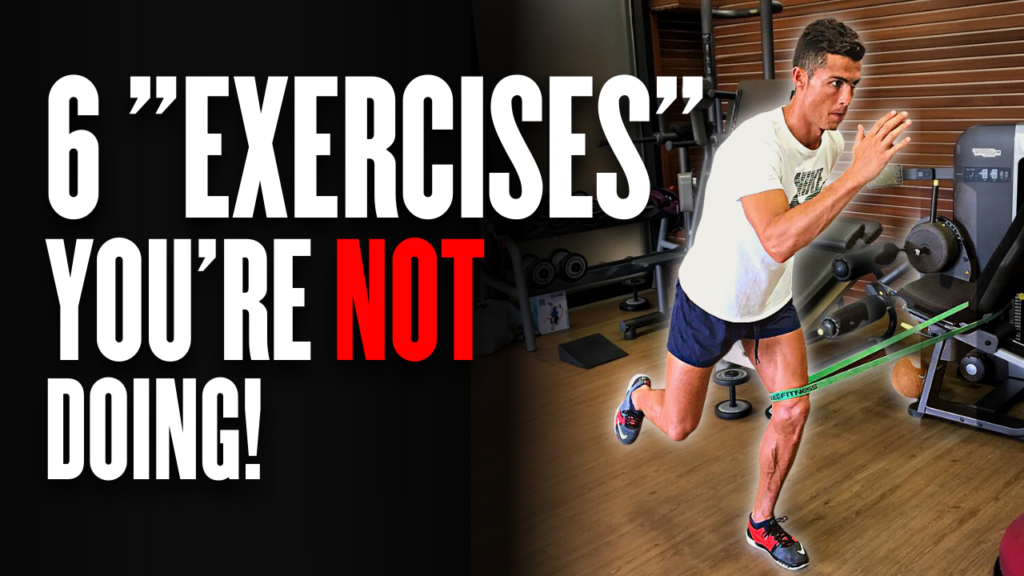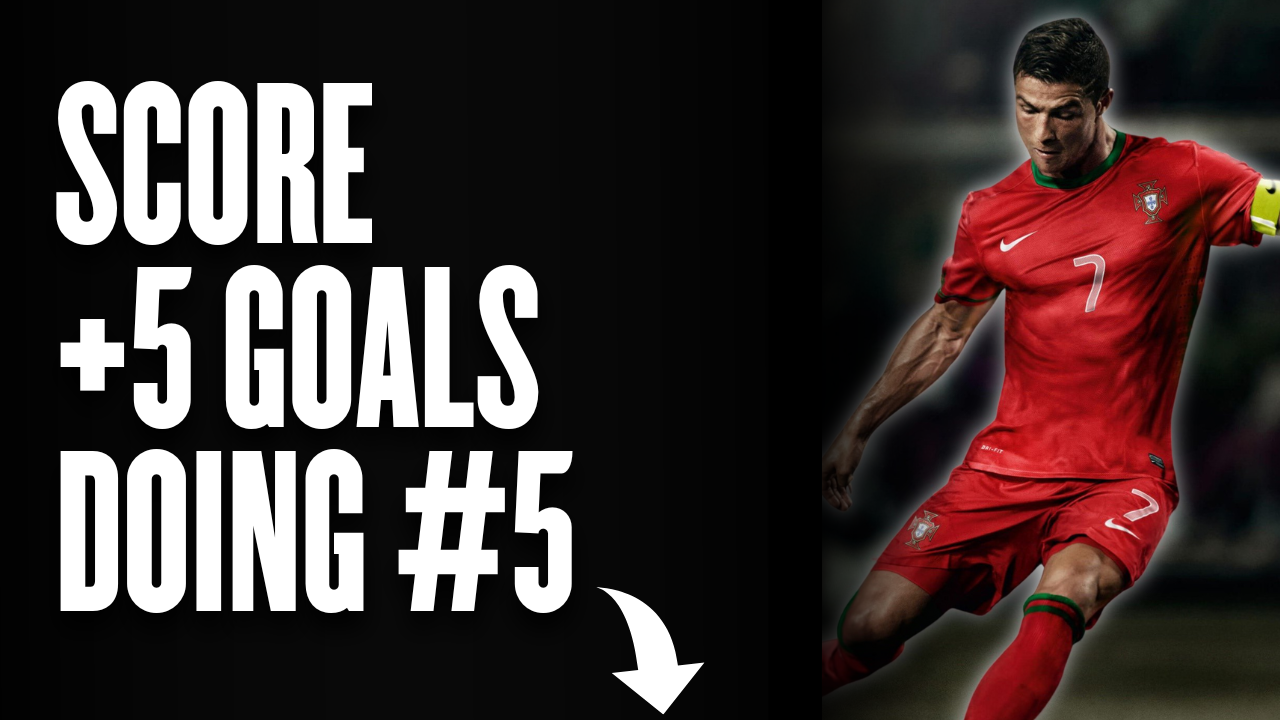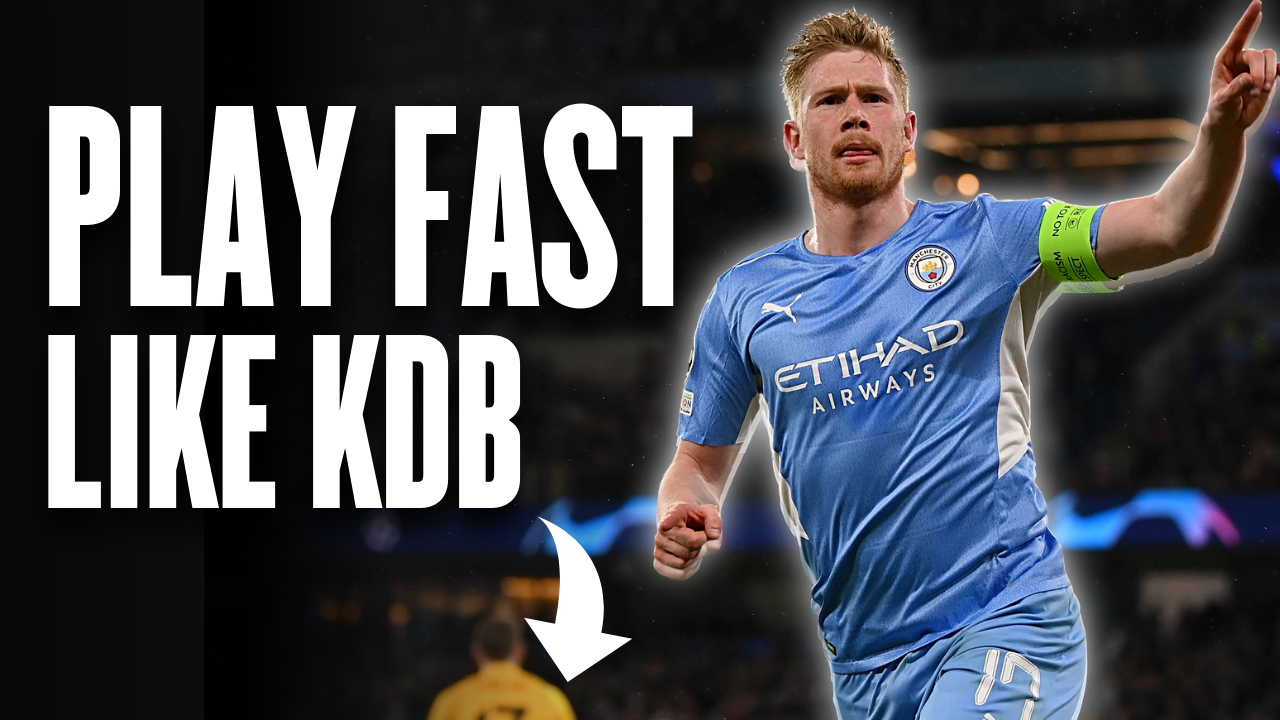
What if I told you that there are 6 types of exercises that are guaranteed to either improve your speed (linear or multidirectional), your power, or your strength for football and they are not the typical gym exercises that you perform at the 3X12 rep and set range?
I’m sure you’re dying to find these out so without further ado let’s get right into the first exercise category which happens to be my favorite one as well; plyometrics.
PLYOMETRICS
For all of you that don’t know from our other videos, plyometrics are exercises that utilize the SSC (Stretch-Shortening Cycle) where the muscles involved in the movement are rapidly lengthening (eccentric phase) and shortening (concentric) with a really short mid-phase called the amortization phase (isometric).
Some examples include pogo hops, countermovement jumps, alternating bounds, and trapbar jumps but there are literally all sorts of plyometrics based on the desired adaptations you’re after.
Ultimately though, plyometrics are meant for power development, aka your ability to produce force fast.
Some plyometrics like loaded plyometrics or plyometrics with longer ground contact times are more force-based while other variations such as band-assisted or short GCT ones are more velocity based.
The key thing to keep in mind though is that plyometric actions mimic the actions that happen on the field. Footballers are constantly using the Stretch-Shortening Cycle because they’re required to produce force fast. By using plyometric training you’re basically;
- optimizing the function of the Stretch Shortening Cycle
- becoming a more energy-efficient and powerful footballer
WANNA LEARN MORE ABOUT PLYOMETRICS? HERE’S EVERYTHING YOU NEED TO KNOW
BALLISTICS
Next up we have ballistics.
Now ballistics are really similar to plyometrics but they have certain distinct differences.
In contrast to plyometrics, ballistic exercises refer to an athlete’s body or an external object being projected into a flight phase. The main difference with plyometrics is that during ballistic exercises the muscles involved either don’t go through the eccentric aka lengthening phase at all or the eccentric loading is minimal.
Some examples include box jumps or any kind of medicine ball throw you can think of.
Similar to plyometrics, they are a superb tool for power development. The ability to load these exercises makes them especially great for improving your Rate of Force Development aka producing really high amounts of force in a short timeframe.

*As an affiliate, I'm earning from qualifying purchases without any extra charges being placed on you.
A tool you definitely want in your gym toolbox as a football player, but also a tool that you need to be careful with (load management).
HEAVY COMPOUND LIFTS
Now another tool that’s worth a special spot in your toolbox is heavy weightlifting.
As we’ve analyzed in our article about strength training for football, heavy lifting is great for max strength development in the gym.
And because force development is a) one of the lowest-hanging fruit of most football players and b) the base for power and velocity, it really is something that can drive great results inside the gym; not only for your max strength but your speed and power overall.
Movement complexity is also pretty low in most cases. Especially compared to other exercises like multidirectional plyometrics or ballistics, so that’s definitely a plus.
Here at FootXFit, we use all sorts of compound lifts with our athletes year-round. Most of the time, we are loading these exercises with heavy weights and making small modifications based on the time of the season they’re in and the results have been great.
Such an underrated gym tool that many football players are missing.
Please, stop thinking that 3X12 is the solution that will optimize your performance. Start opening your eyes up to a wider range of tools and principles.
VELOCITY-BASED LIFTING
And speaking of principles, you can also start lifting for velocity. That means using a lower external resistance in various lifts but lifting with maximal INTENT.
A lighter weight will allow you to lift faster and therefore stress that mid-range between power and velocity.
For example, you can load the barbell with 30% of your Back Squat 1RM and perform 5X2 Speed Squats

*As an affiliate, I'm earning from qualifying purchases without any extra charges being placed on you.
Similar to plyometrics and ballistics, lightweight lifting at higher velocities is a great tool for power development, especially velocity-based power.
You can use this type of lifting year-round based on the season and the training week you’re in. The good thing is that it can be used anywhere; both with simple compound lifts and with more complex exercises like Olympic lifts.
NOT IN THE MOOD TO READ? WATCH THE VIDEO!
SPRINTING
Next up we have sprinting.
No matter what my players need more of, sprinting is a staple in all of our training blocks.
The velocity demands in modern football are insane. Players like Mbappe, Haaland, and Van Dijk are reaching top speeds of up to 36km/h.
So, in order to get our players closer to that elite standard we like to use the most effective stimulus there is out there for speed development; sprinting.
Apart from performance optimization though, we also use it as a tool to decrease the risk of injury, especially hamstring tears; the most common injury in pro football.
There are a lot of ways you can use sprints to develop speed. We like to play with the sprint distances and use top-velocity sprinting as well as resisted or assisted sprinting to make some serious gains speed-wise, especially in a linear motion.
But because football isn’t linear, we also like to couple linear sprinting with cuts and turns to meet the demands of the sport.
This is something we do more of during the off-season; the time when players are away from team practice.
The exact opposite happens in-season; we limit multidirectional speed drills as players are already getting enough exposure to that.
So what type of sprinting drills you use ultimately comes down to
- the adaptations you desire from your training block, and,
- the exposure you get to each stimulus during that specific time/season
We know for a fact that during the season, top velocity exposure is drastically lower compared to accelerations, decelerations, cuts, and turns, so this is something that can guide the training process.
ISOMETRICS
Then, we also have isometrics; an underutilized gym tool, mainly popular in the rehab world that starts gaining popularity in the football performance world as well.
Essentially, isometrics are muscle contractions where the muscles involved don’t noticeably change in length and the joints involved are at a fixed angle.
The reason isometrics aren’t that popular is that they aren’t really mimicking the actions happening on the field or the velocity at which they’re executed.
This makes them a less appealing type of exercise but if you know how to use them, they can literally be a game-changer, both for your performance and health.
Performance-wise, isometric training can do two things.
#1 maintain or increase your max strength aka the most amount of force you can produce, and
#2 increase your rate of force development aka your ability to produce really high amounts of force relatively fast.
These two adaptations require a different training stimuli.
YIELDING ISOMETRICS
On one hand, you can use yielding isometrics to build general strength. For those of you that don’t know, a yielding isometric is when you hold your body or an external object at a certain position for a predefined time. This includes exercises like the plank, side lunge ISO holds, and Wall Sits.
Yielding ISOs are great for developing strength at specific muscle lengths and joint angles. A really versatile and helpful tool for performance optimization, injury risk reduction, and rehab/pain management (analgesic effect).
OVERCOMING ISOMETRICS
On the other hand, you have overcoming isometrics, where you are pushing or pulling an immovable object with maximal intent. This is a great way to recruit as many motor units are possible to build both your max strength but more-so your rate of force development.
Now we could go on for a lot more, but I want you to keep two things in mind;
#1 use isometrics to address weak spots of your body or previously injured areas.
The fact that you can target specific muscle lengths and joint angles make isometrics a safe and efficient way to build resilience. On top of that, their analgesic effect can help you manage pain effectively.
#2 start viewing isometrics as a tool for power, speed, and strength development. The possibilities are literally endless.
You just gotta be smart about using them in your training.
Now I know this might be a bit too much information for you to digest so I would definitely suggest going over the info twice and taking some notes if you really wanna make your training smarter.
However, if you’d like to leave all the guesswork to the side and start taking action, then consider working with us.
Either click here and apply for a coaching spot or DM us “LEVEL UP”. We will get back to you as soon as possible.




